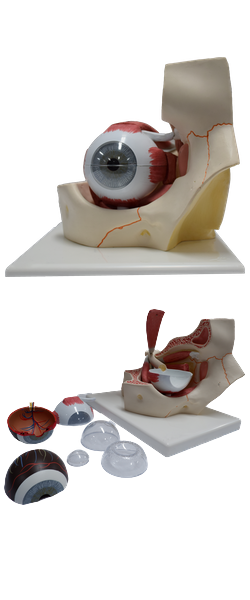Main Model

Orbit : 29 Spenoidal bone

Wedged between the frontal, temporal, and occipital bones
is the sphenoid, an irregular unpaired bone that consists of a
body and three pairs of processes: greater wings, lesser wings,
and pterygoid processes. The greater and lesser
wings of the sphenoid spread laterally from the lateral aspects
of the body of the bone. The greater wings have orbital, temporal, and infratemporal surfaces apparent in facial, lateral,
and inferior views of the exterior of the cranium and cerebral surfaces seen in internal views
of the cranial base. The pterygoid processes,
consisting of lateral and medial pterygoid plates, extend
inferiorly on each side of the sphenoid from the junction of the
body and greater wings.
The groove for the cartilaginous part of the pharyngotympanic (auditory) tube lies medial to the spine of the
sphenoid, inferior to the junction of the greater wing of the
sphenoid and the petrous (Latin rock-like) part of the temporal bone. Depressions in the squamous (Latin flat) part of the temporal bone, called the mandibular fossae,
accommodate the mandibular condyles when the mouth is
closed. The cranial base is formed posteriorly by the occipital bone, which articulates with the sphenoid anteriorly.